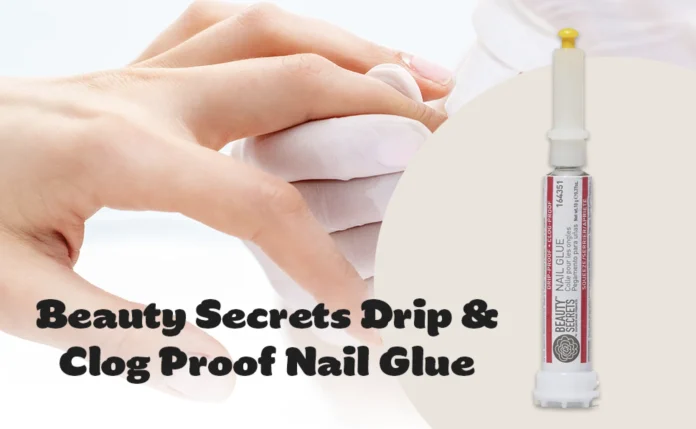Introduction
Nail glue is an essential tool in the beauty arsenal of anyone who loves manicured nails. Whether you’re a professional nail technician or a DIY enthusiast, nail glue can be a game-changer. This article delves into the fascinating world of nail glue, revealing its secrets and offering practical tips to make the most of it.
What is Nail Glue?
Nail glue is a specialized adhesive designed to attach artificial nails or nail decorations to your natural nails. Made primarily from cyanoacrylate, it forms a strong bond quickly. There are various types of nail glue, including brush-on, tube, and squeeze bottle formats, each suited for different applications and preferences.
History of Nail Glue
The journey of nail glue began in the mid-20th century, evolving from simple adhesives to sophisticated formulas used in today’s beauty industry. Initially used in industrial settings, cyanoacrylate was eventually adapted for cosmetic use, revolutionizing nail art and extensions. Today, nail glue is a staple in salons and home beauty kits alike.
Benefits of Using Nail Glue
Nail glue offers numerous advantages:
- Durability and Longevity: Nail glue ensures that your artificial nails or decorations stay put for weeks.
- Cost-Effectiveness: It’s an affordable solution compared to frequent salon visits.
- Versatility: Ideal for both simple nail repairs and intricate nail art designs.
How to Choose the Right Nail Glue
Selecting the perfect nail glue involves considering several factors:
- Strength: For longer wear, choose a strong adhesive.
- Drying Time: Fast-drying formulas save time.
- Ingredients: Look for hypoallergenic options if you have sensitive skin.
Popular brands like Kiss, IBD, and Nailene offer reliable products that cater to different needs.
Step-by-Step Guide to Applying Nail Glue
- Preparation: Clean and buff your nails, ensuring they are dry and free from oils.
- Application Process: Apply a small amount of glue to the artificial nail and press it onto your natural nail, holding for about 10-15 seconds.
- Aftercare Tips: Avoid water for the first hour and moisturize your cuticles regularly to maintain nail health.
Removing Nail Glue Safely
Removing nail glue requires patience and the right tools:
- Methods: Soak your nails in acetone for 10-15 minutes, then gently push off the artificial nail.
- Do’s and Don’ts: Avoid peeling or forcing off the nails to prevent damage.
Common Mistakes to Avoid
- Overuse of Glue: Using too much can cause overflow and mess.
- Poor Application Techniques: Ensure even application to avoid air bubbles and weak bonds.
Nail Glue and Nail Health
While nail glue is generally safe, improper use can lead to issues like weakened nails or allergic reactions. Always follow instructions and take breaks between applications to allow your nails to recover.
DIY Nail Art with Nail Glue
For those who love DIY projects, nail glue opens up a world of creative possibilities:
- Simple Designs: Start with basic accents like rhinestones or glitter.
- Advanced Techniques: Try more complex designs like 3D nail art or mixed media nails.
Nail Glue Alternatives
If nail glue isn’t your thing, there are alternatives:
- Gel Adhesives: These offer strong bonds with a bit more flexibility.
- Adhesive Tabs: Great for temporary wear, though not as durable.
FAQs about Nail Glue
- Is nail glue safe for natural nails? Yes, if used correctly and sparingly.
- How long does nail glue last? Typically, it lasts 1-2 weeks.
- Can I use super glue instead of nail glue? It’s not recommended due to potential damage and safety concerns.
- How do I fix a broken nail with glue? Clean the nail, apply a small amount of glue, and press the broken parts together.
- What’s the best way to store nail glue? Keep it in a cool, dry place and ensure the cap is tightly closed.
Nail Glue in the Professional Setting
Professional nail technicians use nail glue for a variety of services, from basic repairs to elaborate nail art. Their expertise ensures a flawless finish and longer-lasting results. Here are some pro tips:
- Use minimal glue to avoid messes.
- File and shape nails after application for a polished look.
Future Trends in Nail Glue
The beauty industry is always evolving, and nail glue is no exception. Innovations include more eco-friendly formulas and improved adhesives that are gentler on nails but just as effective. Keep an eye out for these exciting developments!
Conclusion
Nail glue is more than just a quick fix—it’s a versatile tool that can elevate your nail game. By choosing the right product and applying it correctly, you can achieve salon-quality results at home. So, why not give it a try and unleash your creativity?
FAQs
- Can I use nail glue on natural nails?
- Yes, nail glue can be used on natural nails for repairs or to attach decorations, but ensure you follow proper application and removal methods.
- How do I remove nail glue without acetone?
- You can use warm soapy water and a nail buffer, though it may take longer and be less effective than acetone.
- Is there a difference between nail glue and eyelash glue?
- Yes, nail glue is much stronger and not suitable for use on skin or eyelashes.
- Can nail glue cause allergic reactions?
- It can, especially if you have sensitive skin or allergies to adhesives. Always do a patch test first.
- What should I do if nail glue gets on my skin?
- Soak the area in warm soapy water and gently peel it off. Avoid pulling or using harsh chemicals.



